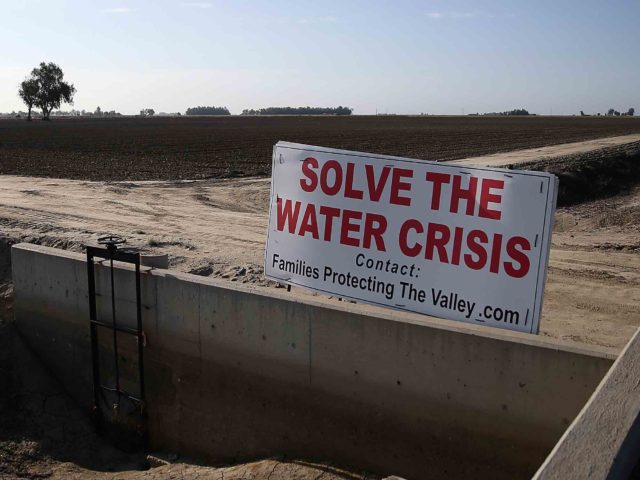Half of California is officially back in drought, while the Midwest and Plains may suffer from extreme flooding, as the extreme La Niña weather condition intensifies.
The U.S. Drought Monitor reports that 92 percent of California is “abnormally dry” and 48 percent of the state is in “moderate drought.” Of greater concern, 20 percent of the state, stretching from Orange County through the San Joaquin Valley, is in “severe drought.”
Because of last year’s 100-year rainy season, the water levels two weeks ago at California’s 12 largest reservoirs were still at 6 percent above their historical averages, despite the abnormally warm and dry December and January.
But over the last two weeks, California mountain snow water equivalent levels fell from 30 percent to just 17 percent. With no new mountain snowfall expected over the next two weeks, the California Department of Water Resources has begun discharging substantial amounts of reservoir waters to comply with the state’s environmental mandates to keep rivers flowing. As a result, four reservoirs have fallen below the average for this time of year.
The National Oceanic and Atmospheric Administration (NOAA) monitors swings in California weather patterns that cyclically swing between extremes of cold and raining El Niño, to the type of extreme warm and bone-dry La Niña conditions the state is suffering this year.
NOAA’s Climate Outcome Likelihood website, which provides a statistical analysis of the probability for normal rain years, estimates that the probability of California precipitation levels returning to normal by the end of the 2017-2018 rain year in October is only 9 percent.
But consistent with extreme La Niña weather conditions, the Midwest and Plains states have been suffering from bitter cold and massive snowfall. Rising temperatures kicking off snowmelt, together with continuing rainfall, will begin to trigger flooding.
Heavily populated communities from the Ohio River Valley to Texas are now at risk from severe flooding. The Yellow, Kankakee, Kalamazoo, and St. Joseph rivers have already reached flood stage, according to National Weather Service hydrologists. Continuing rain is expected to push the Illinois, Pecatonica, Grand, Iroquois, Rock, Tiffin, and Tippecanoe rivers over the flood stage in the next couple of days.
Missouri Gov. Eric Greitens activated the National Guard in anticipation of storms and more flooding; several road closures from landslides closed roads in the Pittsburgh area; and a one-year-old girl was found dead in standing water in her Michigan family’s backyard.
Photo: file

COMMENTS
Please let us know if you're having issues with commenting.